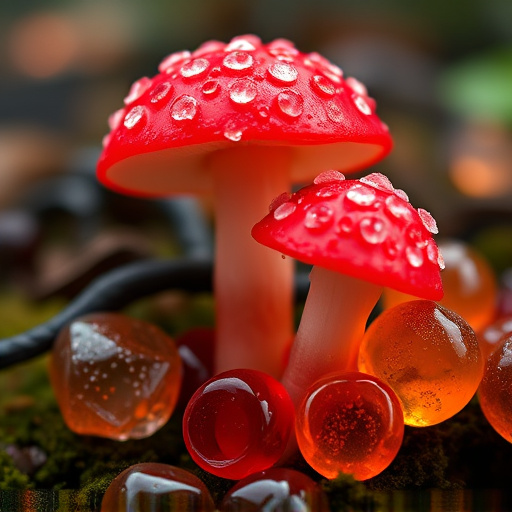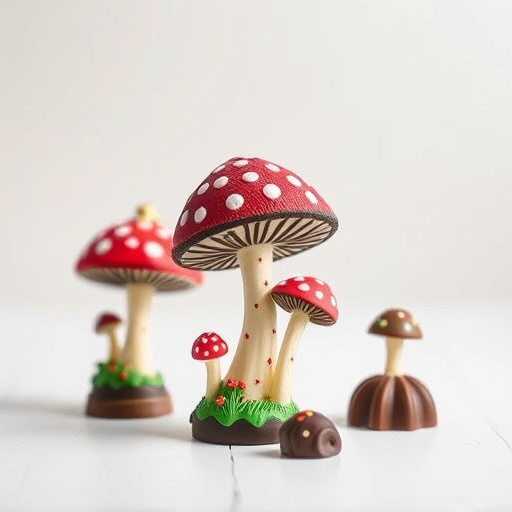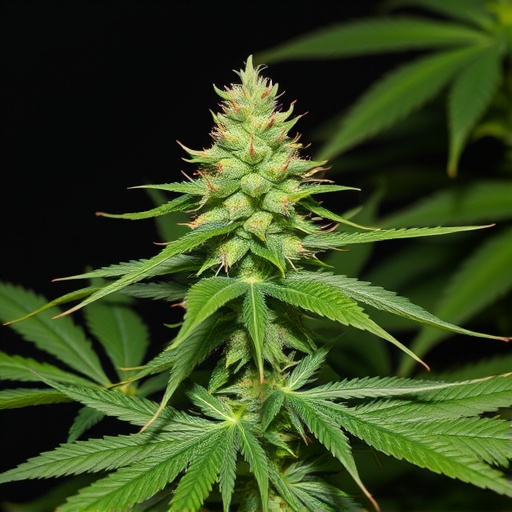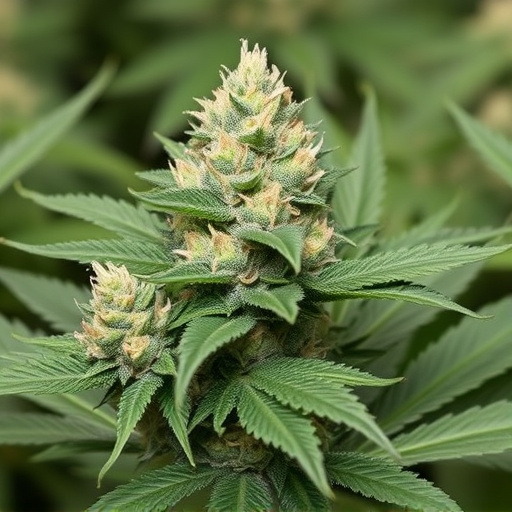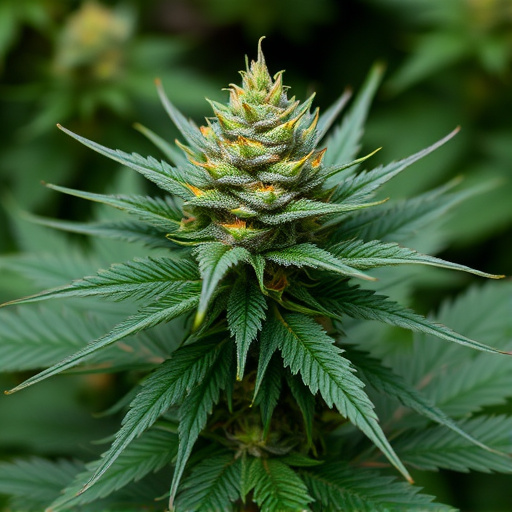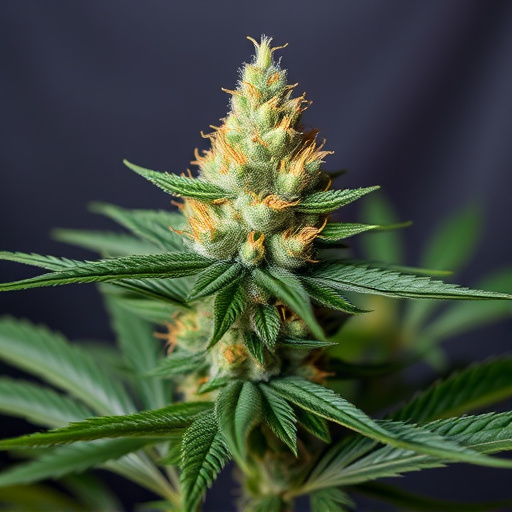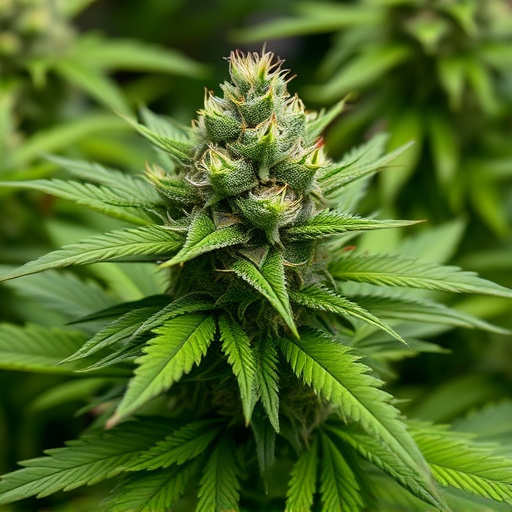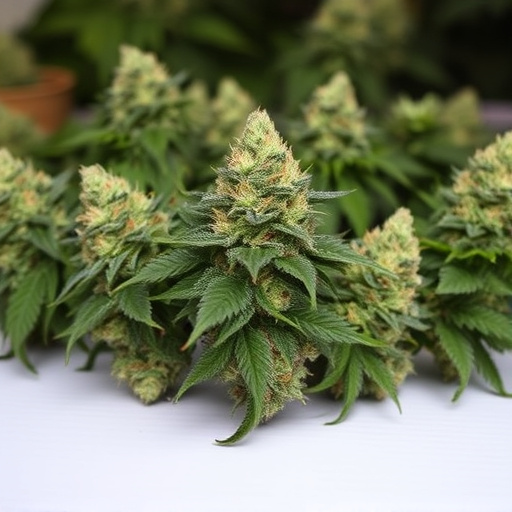The distinctive "skunk" aroma of cannabis is a result of interactions between a strain's genetics and terpene profile, with Indica-dominant hybrids often exhibiting stronger skunk notes due to high myrcene levels. Genetic diversity creates varied terpene profiles, influencing both scent and cannabinoid effects. Outdoor cultivation under natural sunlight and indoor farming with tailored lighting can enhance specific aromas. Temperature, humidity, and hybridization practices also significantly impact cannabis scents, particularly the robust, earthy, and skunkier notes common in Indica-dominant hybrids.
Have you ever wondered why some cannabis strains emit a distinct skunk-like aroma while others have more subtle scents? It’s all about understanding the intricate relationship between genetics, environment, and breeding practices. This article delves into the factors that contribute to a strain’s skunkiness, focusing on genetic composition, terpene profiles, environmental influences, and hybridization techniques. Uncover why certain indica dominant hybrid strains are renowned for their pungent characteristics and how these traits have been shaped over time.
- Genetic Composition and Terpene Profile: Understanding the Basis of Skunkiness
- Environmental Factors: How Growing Conditions Impact Scent
- Hybridization and Breeding Practices: The Role in Shaping Skunkier Aromas
Genetic Composition and Terpene Profile: Understanding the Basis of Skunkiness
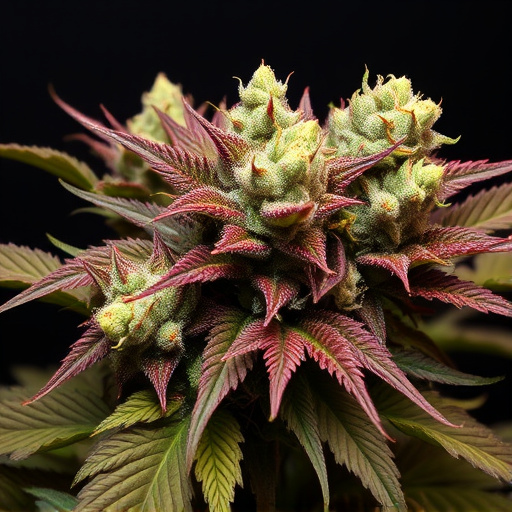
The skunk-like aroma associated with cannabis is a complex interplay between a strain’s genetic composition and its terpene profile. Indica dominant hybrid strains, for instance, often exhibit stronger skunk notes due to their higher concentrations of myrcene, one of the most prevalent terpenes in cannabis. Myrcene is known for its earthy, musky, and slightly skunk-like scent, contributing significantly to the characteristic odour of these strains.
Genetic diversity among cannabis plants plays a pivotal role in shaping these chemical profiles. Different varieties have unique terpene compositions, influenced by their specific genetic lineages. Terpenes are volatile organic compounds that not only contribute to aroma but also interact with cannabinoids like THC and CBD, potentially enhancing or altering their effects. Understanding this intricate relationship between genetics, terpenes, and scent is key to appreciating the diverse aromas presented by various cannabis strains.
Environmental Factors: How Growing Conditions Impact Scent
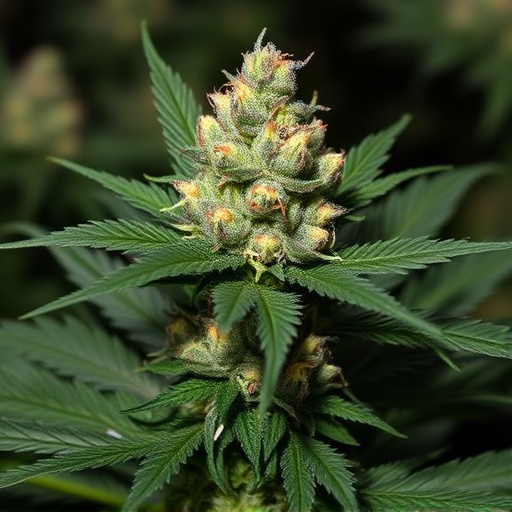
The scent of cannabis is influenced by a complex interplay of genetic and environmental factors. One key aspect that significantly impacts the aroma is the growing conditions. Plants, including cannabis, are highly sensitive to their surroundings, and this sensitivity shows in the final product. For instance, strains that are grown outdoors in natural sunlight tend to develop more complex terpine profiles, contributing to a broader range of scents. Conversely, indoor cultivation with specific lighting setups can enhance certain aroma compounds, leading to more pronounced skunk-like notes.
Additionally, environmental factors like temperature and humidity play a critical role. Warmer climates might encourage the production of more volatile terpenes, which can result in a stronger, more skunk-like odor. Conversely, cooler temperatures can slow down terpene development, creating a milder scent profile. These variables are particularly relevant for indica dominant hybrid strains, known for their diverse aromatic characteristics and potential to express unique sensory profiles based on the growing environment.
Hybridization and Breeding Practices: The Role in Shaping Skunkier Aromas

Hybridization and breeding practices play a pivotal role in shaping the diverse aromas within the cannabis world, particularly when it comes to skunkier scents. Breeders often aim to enhance specific traits, including the pungent, skunk-like aroma, by carefully selecting parent strains and employing various techniques. Indica dominant hybrid strains, for instance, are renowned for their robust and earthy notes, sometimes with a hint of skunkiness, due to the dominance of indica genetics.
Through selective breeding, cultivators can intensify these aromas over generations. This process involves cross-pollination between parent plants known for their desirable traits, such as potent terpenes profiles or high concentrations of specific cannabinoids. The resulting offspring inherit these characteristics, leading to more pronounced skunk scents in some cases.
The skunk-like aroma in cannabis is a complex interplay of genetic makeup, environmental influences, and breeding practices. Indica dominant hybrid strains often exhibit stronger skunk notes due to specific terpene profiles and genetic traits. Understanding these factors empowers cultivators and consumers alike to appreciate the diverse scents and choose varieties that best suit their preferences. By exploring these nuances, cannabis enthusiasts can navigate the aromatic landscape and discover the unique characteristics of each strain.



